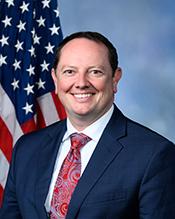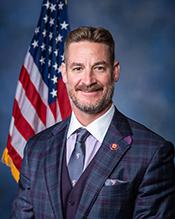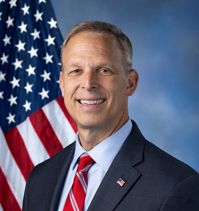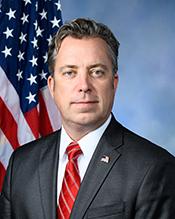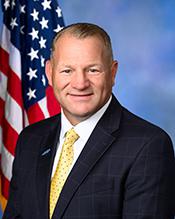0
0
0
Freights First Act
12/15/2023, 3:59 PM
Summary of Bill HR 3893
Bill 118 hr 3893, also known as the Freights First Act, is a piece of legislation currently being considered by the US Congress. The main goal of this bill is to prioritize the transportation of freight on the nation's highways and railways.
The Freights First Act aims to improve the efficiency and reliability of freight transportation in the United States. It seeks to address issues such as congestion, delays, and safety concerns that currently impact the movement of goods across the country.
One of the key provisions of the bill is the establishment of a national freight policy that will guide decision-making and investment in freight infrastructure. This policy will prioritize projects that enhance the movement of goods, reduce bottlenecks, and improve the overall efficiency of the freight transportation system. Additionally, the Freights First Act includes measures to promote the use of innovative technologies and practices in freight transportation. This includes investments in advanced freight management systems, improved data collection and analysis, and the development of sustainable freight transportation solutions. Overall, the Freights First Act is aimed at modernizing and improving the nation's freight transportation system to better meet the needs of businesses, consumers, and the economy as a whole. It is currently being debated in Congress, with supporters arguing that it will help boost economic growth and competitiveness, while critics raise concerns about the potential costs and impacts on other transportation priorities.
The Freights First Act aims to improve the efficiency and reliability of freight transportation in the United States. It seeks to address issues such as congestion, delays, and safety concerns that currently impact the movement of goods across the country.
One of the key provisions of the bill is the establishment of a national freight policy that will guide decision-making and investment in freight infrastructure. This policy will prioritize projects that enhance the movement of goods, reduce bottlenecks, and improve the overall efficiency of the freight transportation system. Additionally, the Freights First Act includes measures to promote the use of innovative technologies and practices in freight transportation. This includes investments in advanced freight management systems, improved data collection and analysis, and the development of sustainable freight transportation solutions. Overall, the Freights First Act is aimed at modernizing and improving the nation's freight transportation system to better meet the needs of businesses, consumers, and the economy as a whole. It is currently being debated in Congress, with supporters arguing that it will help boost economic growth and competitiveness, while critics raise concerns about the potential costs and impacts on other transportation priorities.
Read the Full Bill
Current Status of Bill HR 3893
Bill HR 3893 is currently in the status of Bill Introduced since June 7, 2023. Bill HR 3893 was introduced during Congress 118 and was introduced to the House on June 7, 2023. Bill HR 3893's most recent activity was Referred to the Subcommittee on Railroads, Pipelines, and Hazardous Materials. as of June 8, 2023
Bipartisan Support of Bill HR 3893
Total Number of Sponsors
1Democrat Sponsors
0Republican Sponsors
1Unaffiliated Sponsors
0Total Number of Cosponsors
14Democrat Cosponsors
0Republican Cosponsors
14Unaffiliated Cosponsors
0Policy Area and Potential Impact of Bill HR 3893
Primary Policy Focus
Transportation and Public WorksPotential Impact Areas
- Administrative law and regulatory procedures
- Department of Transportation
- National Railroad Passenger Corporation (Amtrak)
- Railroads
Alternate Title(s) of Bill HR 3893
Freights First Act
Freights First Act
To amend title 49, United States Code, to limit the preference for Amtrak using rail lines, junctions, and crossings near ports and rail yards, and for other purposes.
Comments
Sponsors and Cosponsors of HR 3893
Latest Bills
Providing amounts for the expenses of the Committee on Ethics in the One Hundred Nineteenth Congress.
Bill HRES 131December 12, 2025
Providing for congressional disapproval under chapter 8 of title 5, United States Code, of the rule submitted by the Bureau of Land Management relating to "Central Yukon Record of Decision and Approved Resource Management Plan".
Bill HJRES 106December 12, 2025
Expressing the sense of the House of Representatives in condemning the Government of the People's Republic of China for its harassment and efforts to intimidate American citizens and other individuals on United States soil with the goal of suppressing speech and narratives the People's Republic of China finds unwelcome.
Bill HRES 130December 12, 2025
Providing for congressional disapproval under chapter 8 of title 5, United States Code, of the rule submitted by the Bureau of Land Management relating to "North Dakota Field Office Record of Decision and Approved Resource Management Plan".
Bill HJRES 105December 12, 2025
Providing for congressional disapproval under chapter 8 of title 5, United States Code, of the rule submitted by the Bureau of Land Management relating to "Miles City Field Office Record of Decision and Approved Resource Management Plan Amendment".
Bill HJRES 104December 12, 2025
Providing amounts for the expenses of the Select Committee on the Strategic Competition Between the United States and the Chinese Communist Party in the One Hundred Nineteenth Congress.
Bill HRES 104December 12, 2025
Critical Access for Veterans Care Act
Bill S 1868December 12, 2025
OATH Act of 2025
Bill S 1665December 12, 2025
A bill to extend the authority for modifications to the Second Division Memorial in the District of Columbia.
Bill S 1353December 12, 2025
Saving Our Veterans Lives Act of 2025
Bill S 926December 12, 2025
